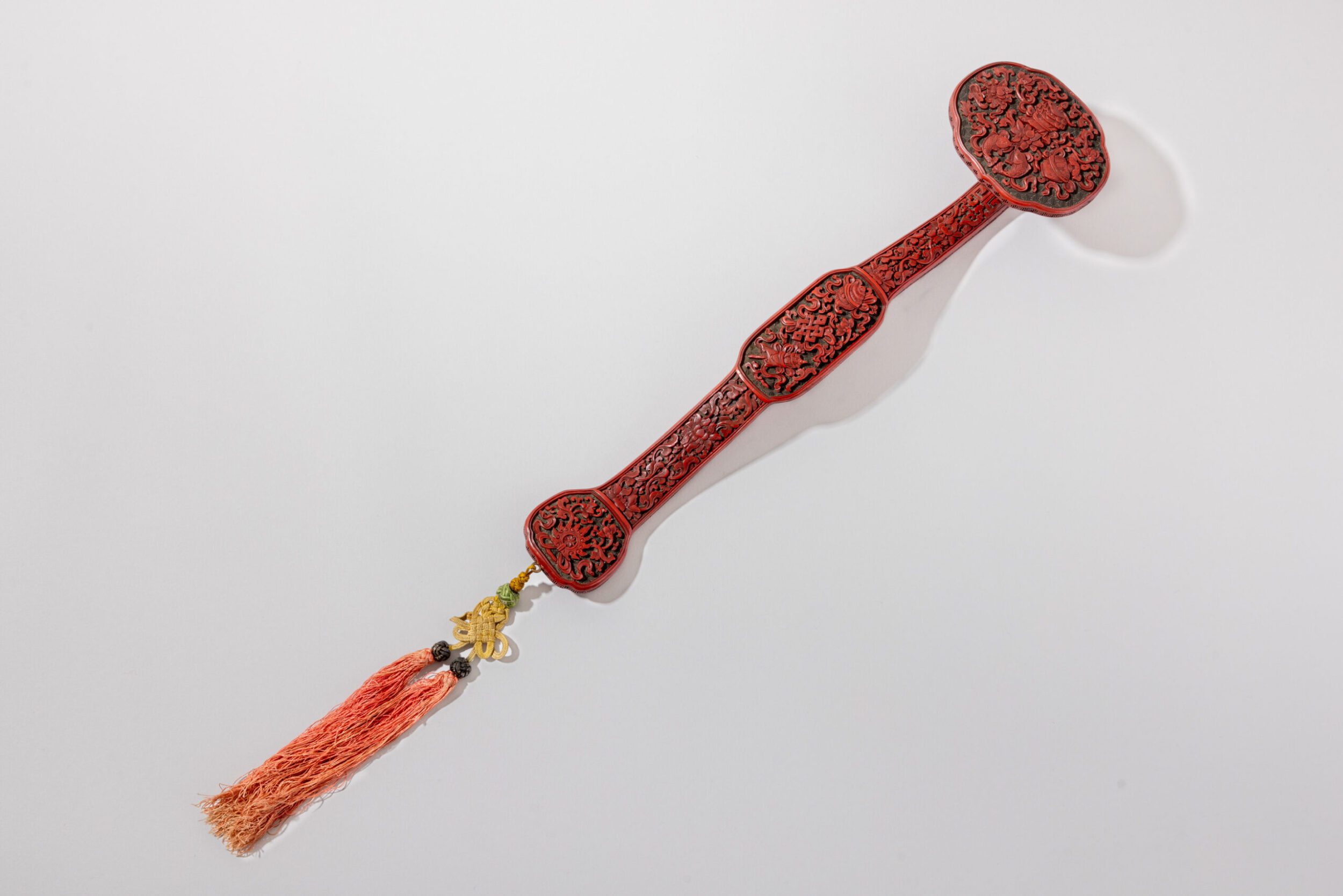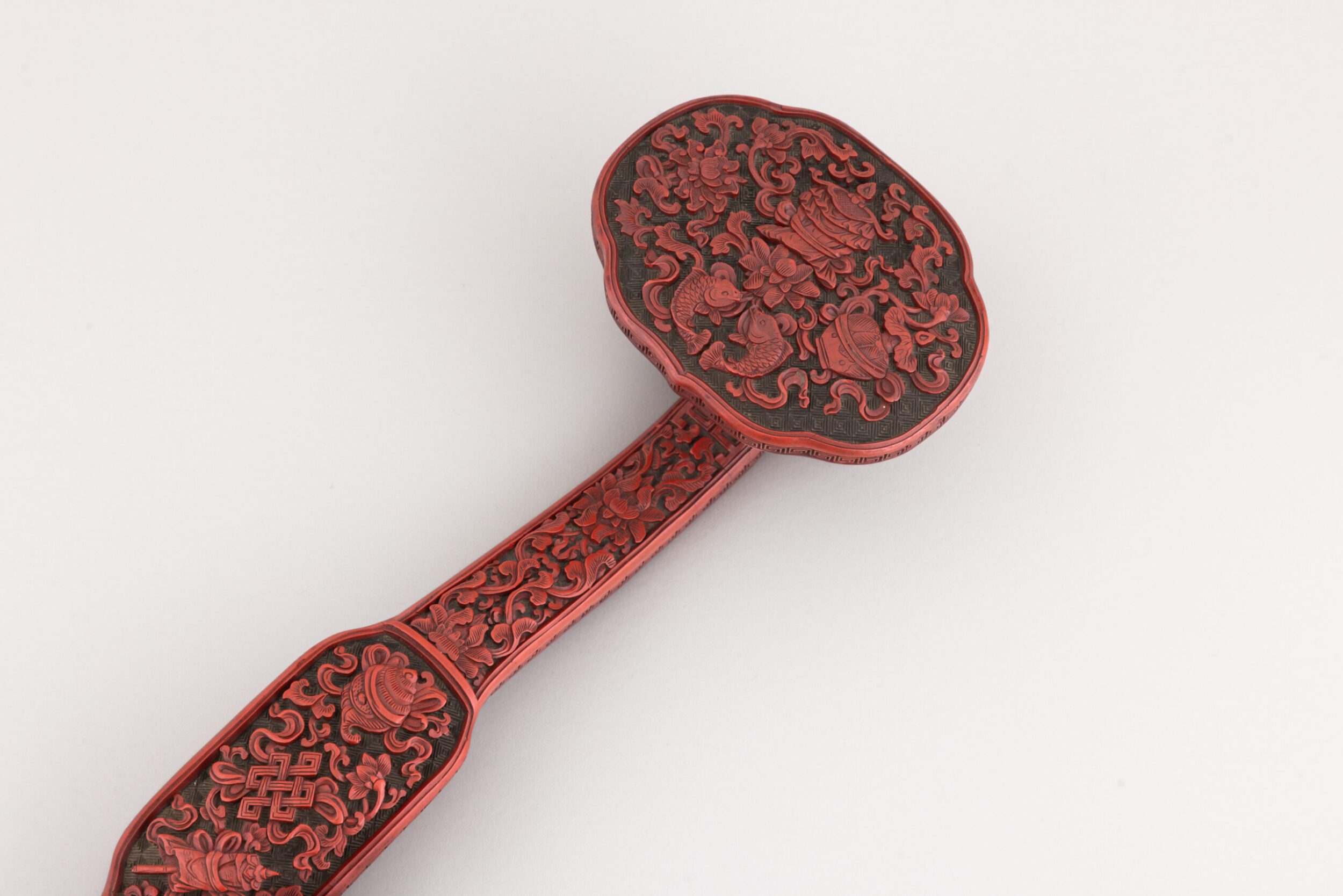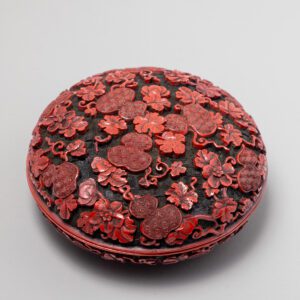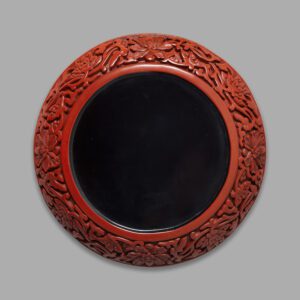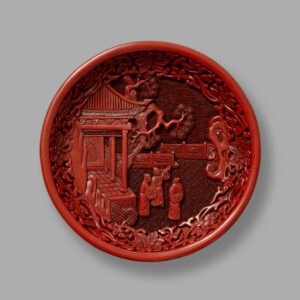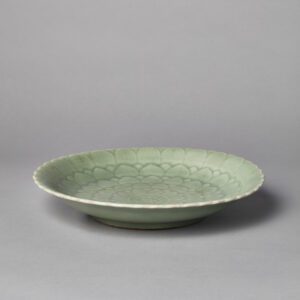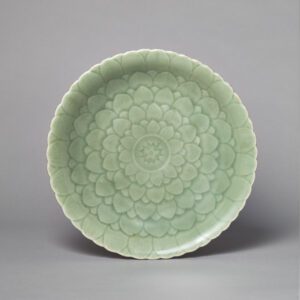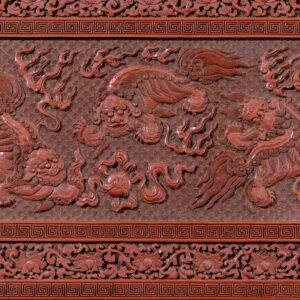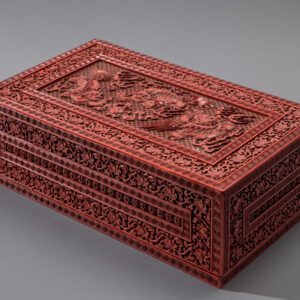The slender curved sceptre carved in red lacquer against a black lacquer background. The ‘lingzhi’-shaped head carved with four of the eight Buddhist emblems, including the Precious Parasol, Vase of Great Treasures, Two Golden Fish and the Lotus Flower.
A cinnabar and black lacquer ‘ruyi’ sceptre (Qianlong period, 1735-1796)
Description
Dimensions: 40cm long
Provenance:
A private American collection
The slender curved sceptre carved in red lacquer against a black lacquer background. The ‘lingzhi’-shaped head carved with four of the eight Buddhist emblems, including the Precious Parasol, Vase of Great Treasures, Two Golden Fish and the Lotus Flower. The arched shaft carved with two further panels with Buddhist symbols set amongst floral sprays.
The history of sceptres dates back to the pre-Tang era (518–907), with its origins probably linked to Buddhism. Initially used as back-scratchers, often depicted in the hands of Buddhist holy figures, the ‘ruyi’ sceptre evolved into a talisman symbolising good fortune. Over time, its shape transformed, and during the latter half of the Tang dynasty, when Buddhism saw a temporary decline, Daoists adopted the ‘ruyi’ as one of their auspicious symbols. From this period, the heart-shaped head of the sceptre was often represented as a ‘lingzhi’ fungus, a symbol of longevity, as in this example.
The tradition of the ‘ruyi’, from the two characters rú (如) and yì (意), meaning “as you wish,” was revitalised during the reign of the Kangxi Emperor (1662–1722) when it became an important imperial object. As the sceptre had no functional purpose and could take on any form (in any material) suitable for conveying well-wishes, it was the perfect imperial gift. See for a more detailed discussion on ‘ruyi’ sceptres, Auspicious Ju-I Sceptres of China, National Palace Museum, Taipei, 1995.
